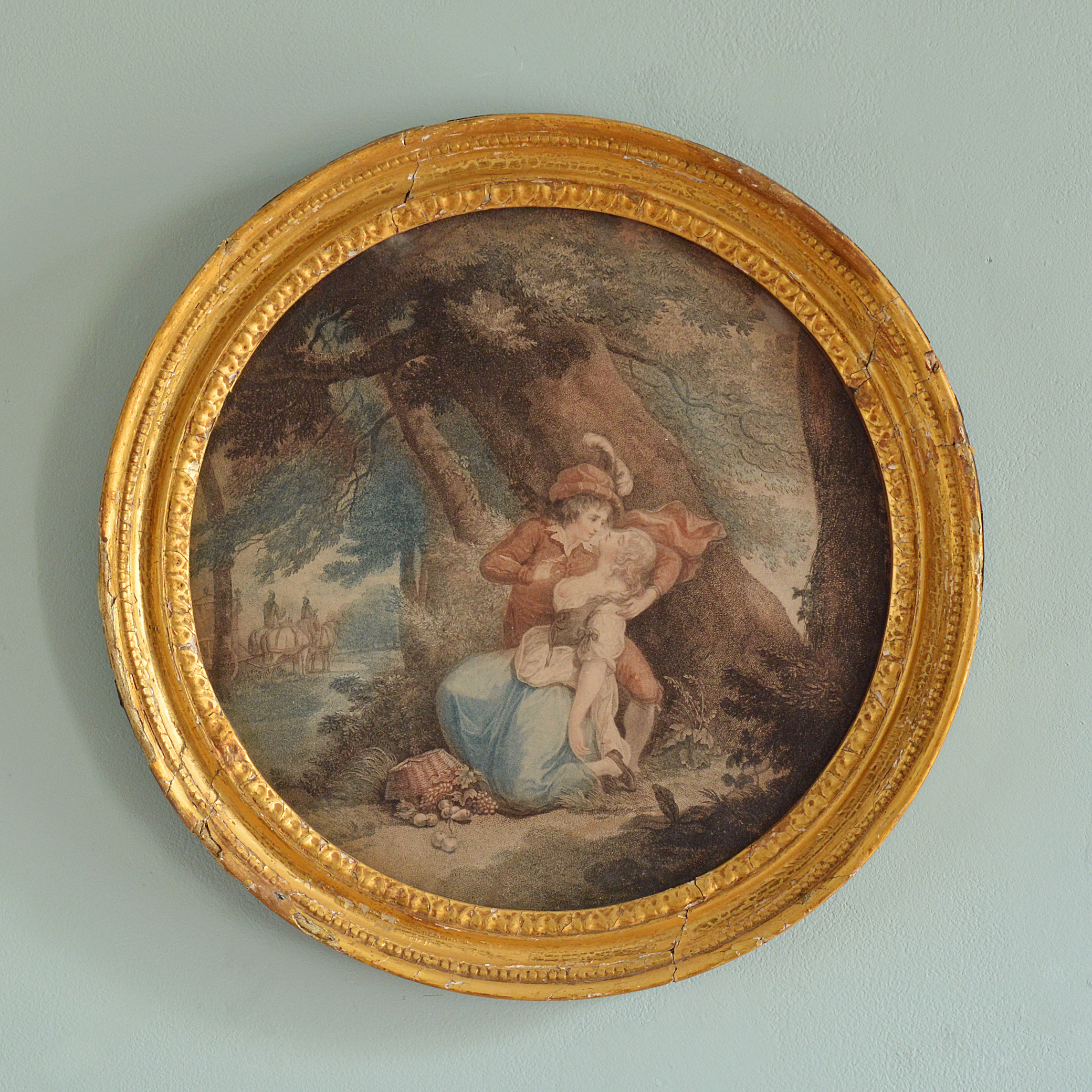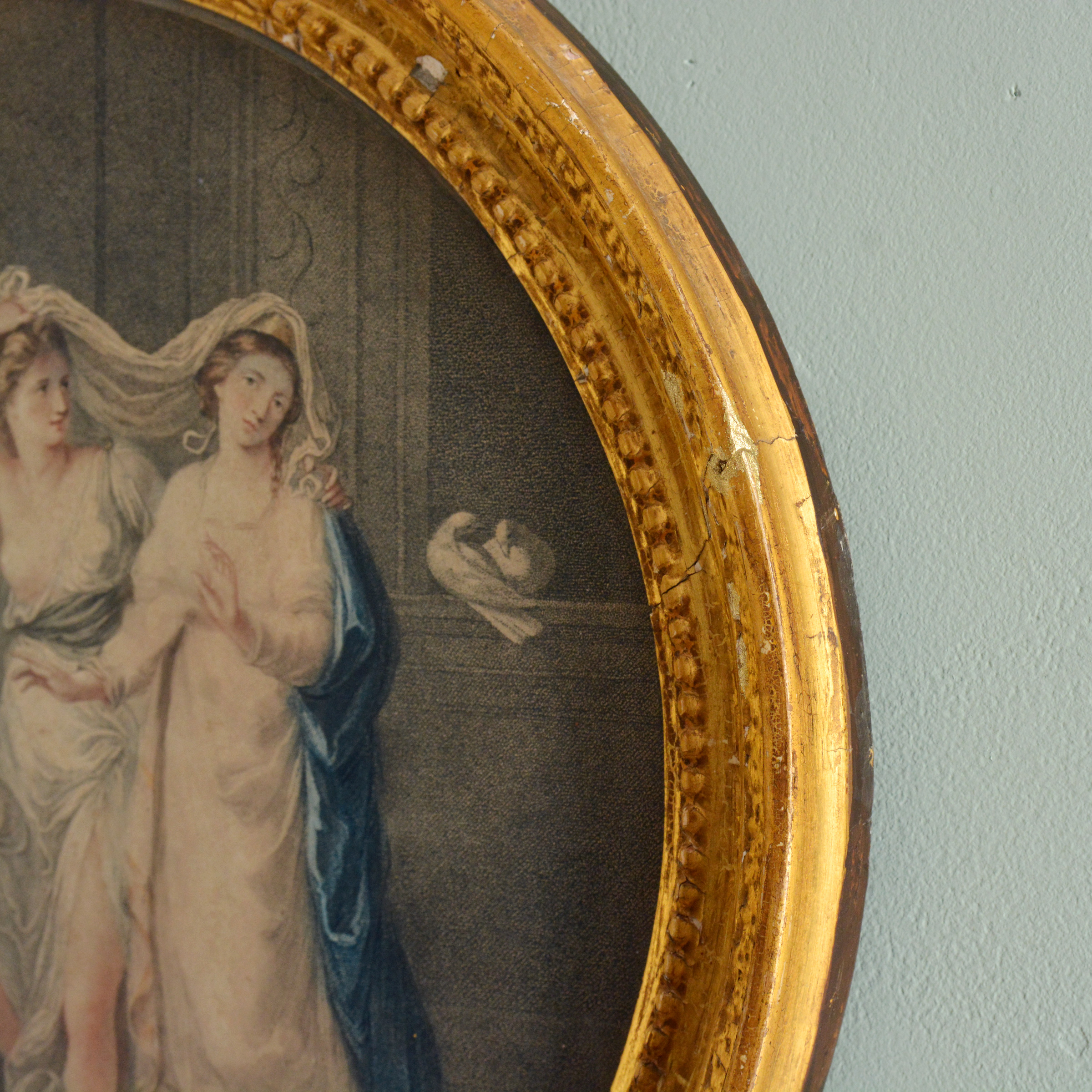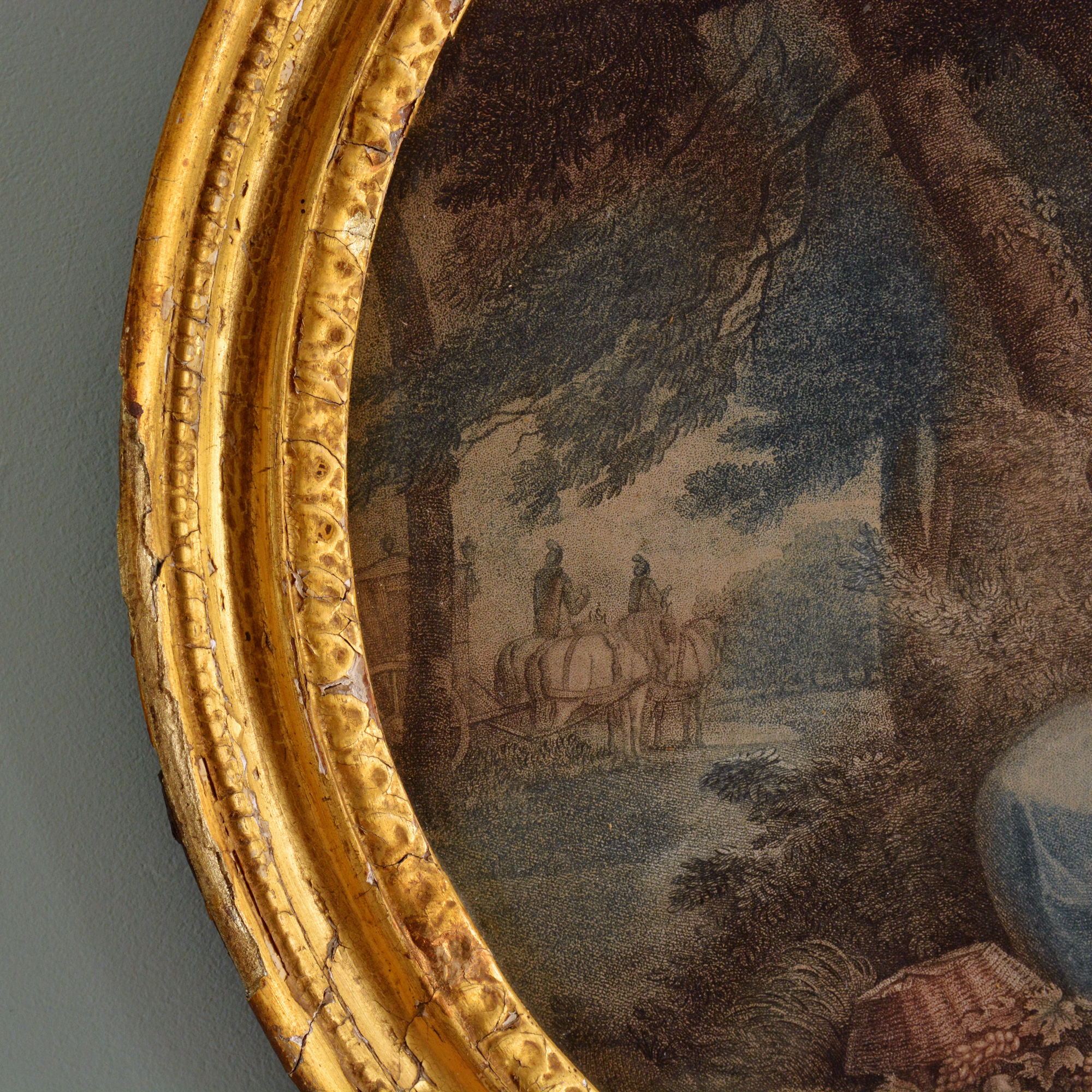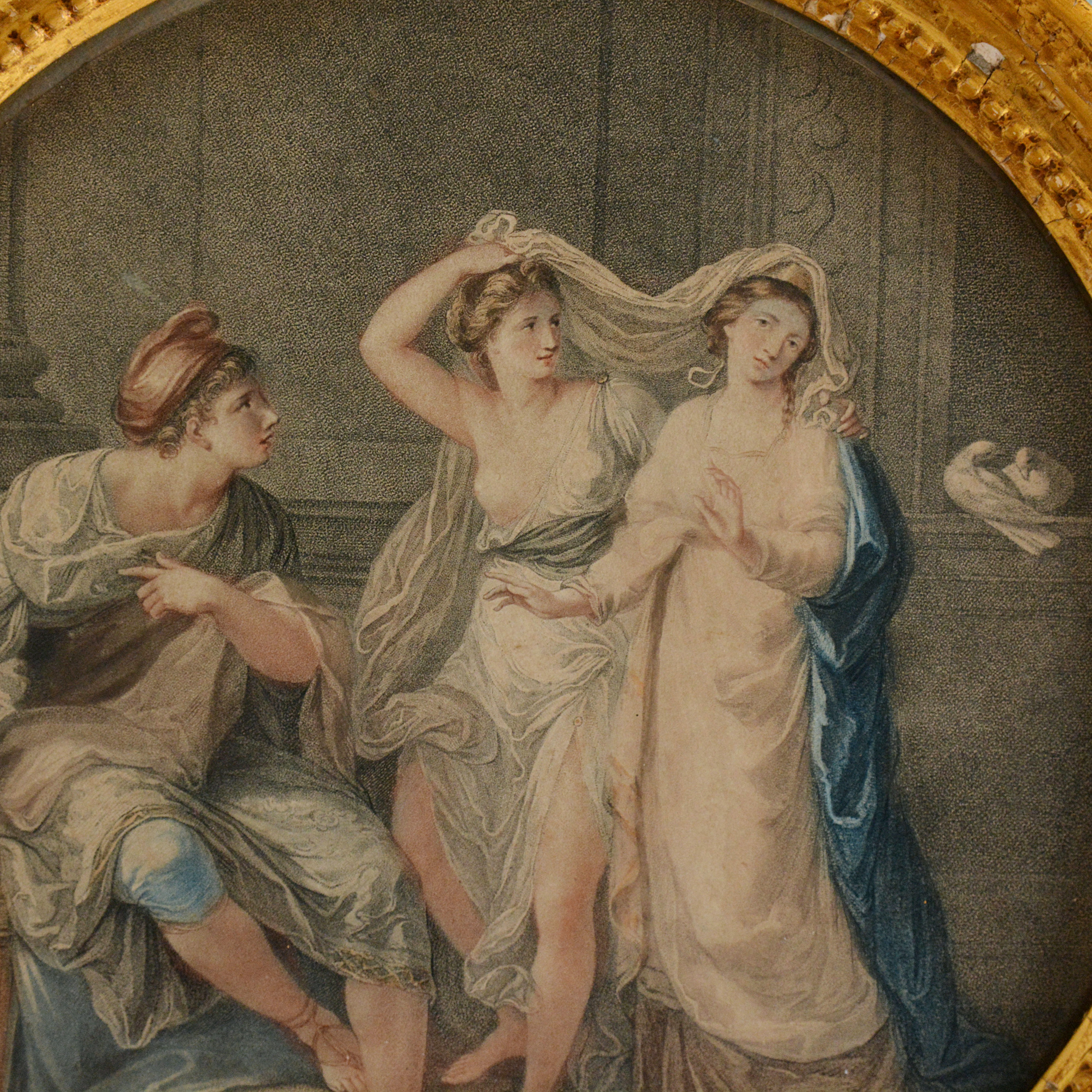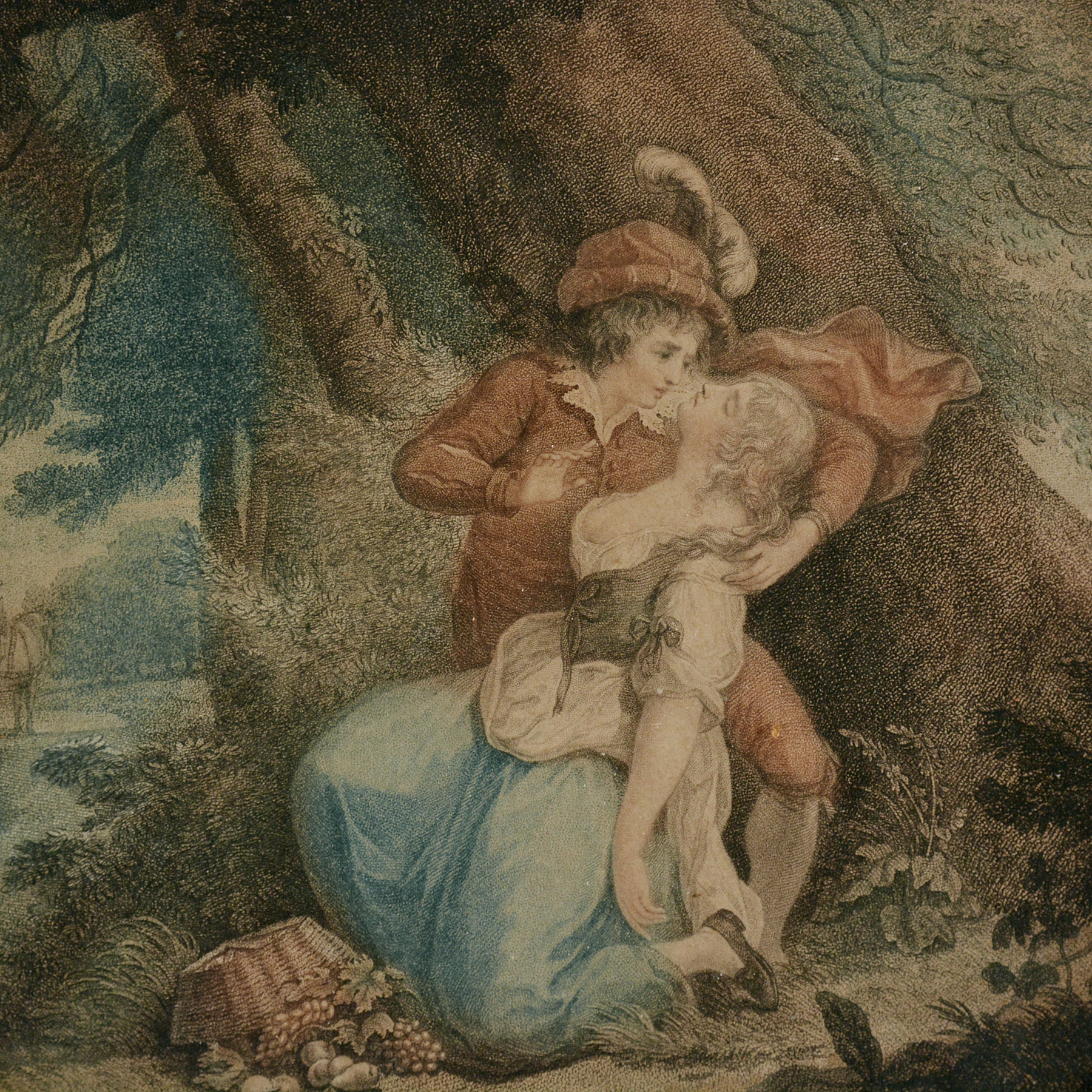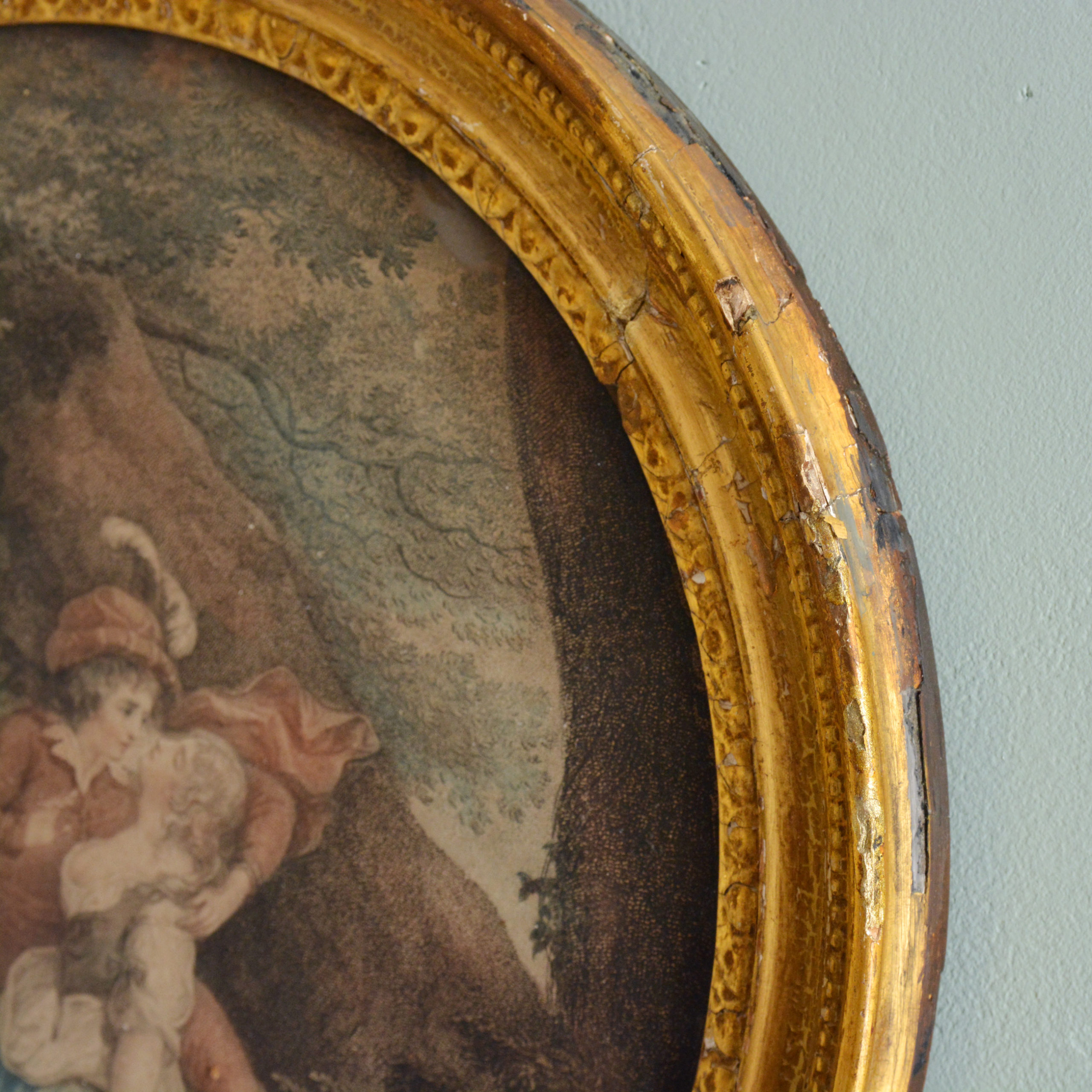No products in the basket.
Archived Stock - This item is no longer available
Rare copper engravings by William Wynne Ryland in original water-gilt frames,
William Wynne Ryland 1733 -1783
Attempted Suicide then execution at Tyburn for forgery
SOLD OUT
In stock
William Wynne Ryland, born November 1733 the son of an engraver and copper plate printer, Edward Ryland. He followed in his father’s line of business and was helped by his godfather, Sir Watkin Williams-Wynn, to visit France and Italy. He stayed in Paris for around five years, studying drawing under François Boucher, and engraving under Jacques Philippe Le Bas. By 1757 he gained a medal for a study from the life at the Académie Royale de Peinture et de Sculpture.
On his return to England William Ryland lived in London, becoming so good at his trade, that he was earning an income of around £3,000 a year from the sale of his engravings. He introduced England to the art of engraving copper-plates so as to yield an impression resembling a chalk drawing. When Kind George III ascended the throne he appointed Ryland his engraver, with a salary of two hundred pounds year, with the Queen adding one hundred pounds a year more, out of her privy purse.
With new found wealth Ryland enjoyed the life of a gentleman, opening a print shop in Cornhill with a business partner, Mr Bryer. By December 1771 it was declared bankrupt but not long after, he resumed business on his own as a print-seller in the Strand. He should have been a successful in this venture but he was too fond of the ‘good life’ and made the decision to discontinue public business and retired to a private residence at Knightsbridge.
Things took a different course when Ryland was suspected of forging two bills in exchange for £714 that defrauded the East India Company Ryland disappeared with his wife on the 1st of April 1783 to Stepney, where they lodged at the hovel of cobbler, Richard Freeman, under the name of Mr and Mrs Jackson, whilst an advertisement was issued offering a reward of £300, about £20,000 in today’s money for his apprehension.
They remained in hiding for two weeks until Mrs Ryland made the mistake of taking one of her husband's shoes to the cobbler to be mended. Inside the shoe was the name of ‘Ryland’ and the cobbler, in order to obtain the reward, ‘tipped off’ the authorities.
The next part of his downfall can be found in the, General Evening Post, 15th April 1783 –
‘On arriving officers found him sitting at a table ‘in a serious posture with a book in his hand and upon turning his head and seeing them he seized a razor which lay before him and cut his throat. The wound was sewn up and the unhappy man put to bed. In the meantime an express was sent to Bow Street in consequence of which Sir Sampson Wright and ___ Gilbert Esq. immediately set off for Stepney where they found the prisoner in a very improper state for examination and the danger the wound he had given himself Ryland remained at Stepney, his hands being confined and being watched by six men lest he should tear open the wound in his throat or by some other means put an end to his life. Yesterday, Ryland was carried by post-chaise and four from his lodgings at Stepney-green to Bow Street for private examination, and afterwards committed to Tothill fields, Bridewell.’
William Wynne Ryland was found guilty and was executed at Tyburn after much delay by a violent thunderstorm, on Friday 29th August 1783, leaving behind a wife and six children. A strange addition to this story is that twelve years earlier, when the poet William Blake had been apprenticed to Ryland but refused, saying "I do not like the man's face: it looks as if he will live to be hanged!"


